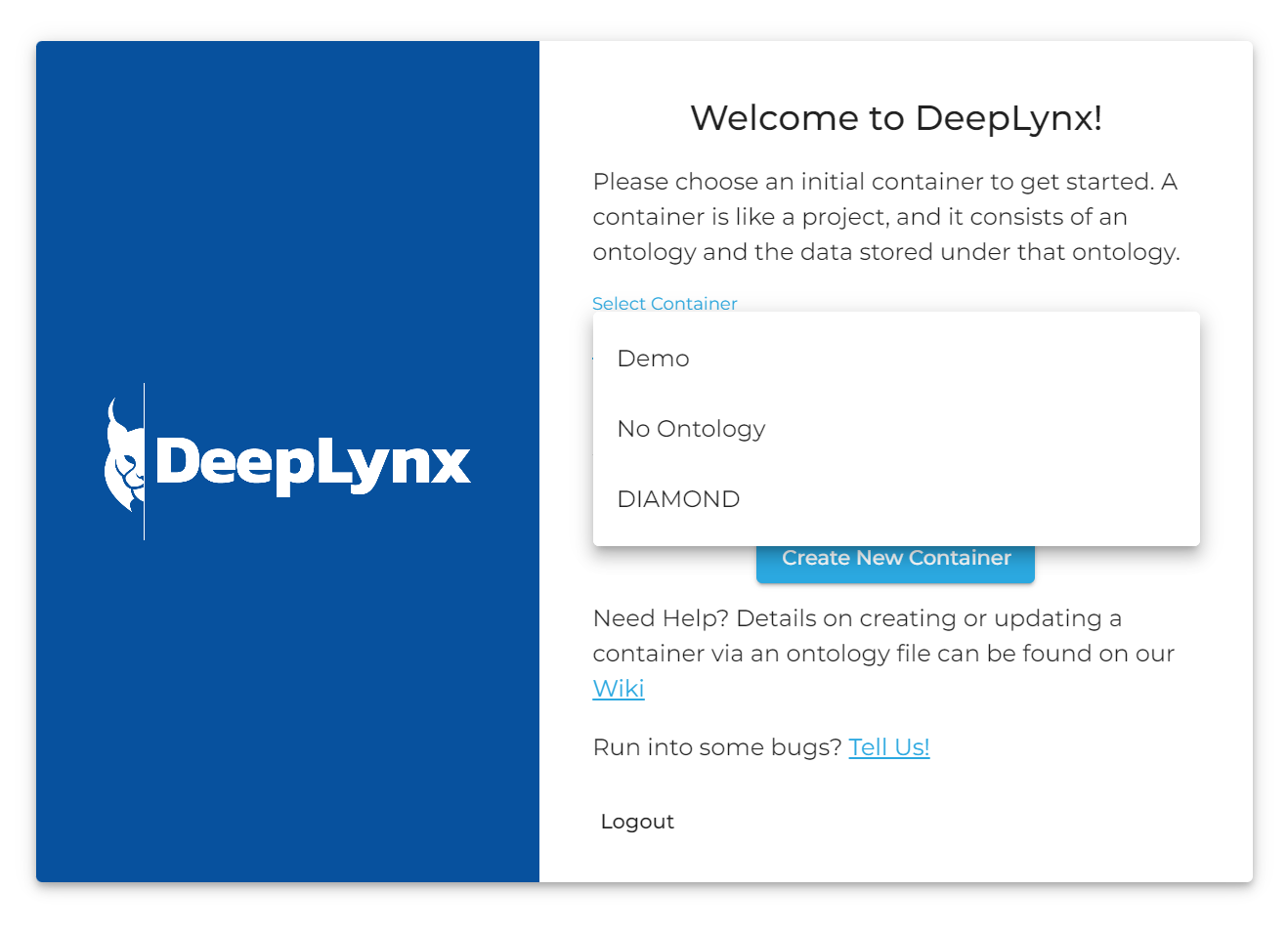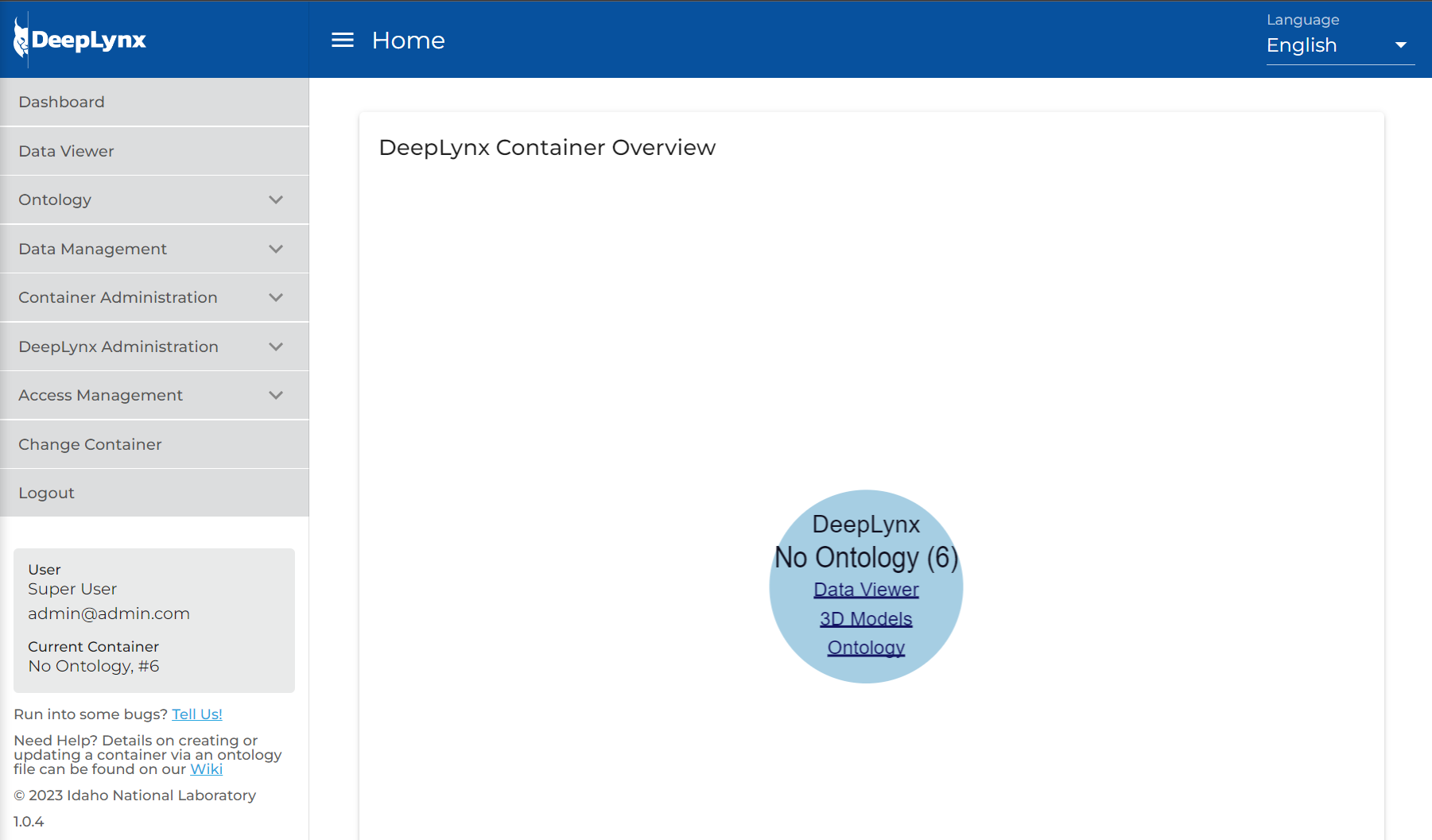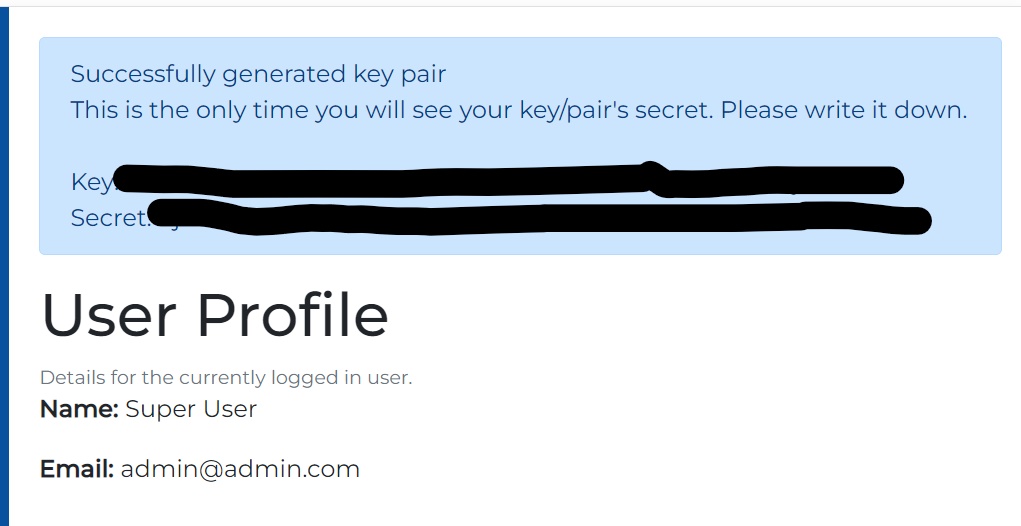-
Notifications
You must be signed in to change notification settings - Fork 14
Generating and Using API Keys Token
Samantha Thueson edited this page Jun 9, 2023
·
7 revisions
A user may generate as many API Key/Secret pairs as they choose. These Key/Secret pairs will be used to gain an access token to DeepLynx in order to access the API on behalf of the user. Generally Key/Secret pairs are used by third-party integrations that do not require, or cannot have, user interaction. API Key/Secret pairs make it possible for an application to independently fetch an access token for interacting with DeepLynx on behalf of the user.
- Navigate to DeepLynx (default is
localhost:8090if running locally). - Select or create a new container -

- Once you've logged in and selected a container you should see an entry on the sidebar titled "Access Management"

- Select "API Keys"
- In the upper-right hand corner click "Generate API Key" -

- Login to DeepLynx (go to
{yourDeepLynxUrl}/oauthin your browser) and navigate to the Profile page (should be the page you see on login) - Push the "Create New Key/Pair" button (Note: these are currently different than application pairs)

- User is then redirected back to the profile page - if key/secret pair creation is successful a banner will appear on top with the new key and secret pair. WRITE THEM DOWN as this will be the only time you will see a key/secret pair's secret.

Now that you have a valid key/secret pair you can request an access token.
- Create and send a GET request to
/oauth/token. The POST request must have the following headers set:
x-api-key |
The API key from your key/secret pair |
x-api-secret |
The API secret from your key/secret pair |
x-api-expiry |
A string describing time span in vercel/ms format - e.g 2 days, 10h, 7d
|
 |
- If you receive an errant response with the warning "SSL Error: Self signed certificate in certificate chain", you may have to turn off certificate verification in Postman. This can be done in the settings pane of your request.

- Use the response value as a Bearer Token when making any further API calls against DeepLynx

- (Optional) If you will be doing Development work using this token and Postman you can save some effort. You can make it so the token automatically gets added to your requests.


Note: No extraneous characters such as " or {} should be present in your bearer token.
Sections marked with ! are in progress.
- HTTP Authentication Methods
- Generating and Exchanging API Keys for Tokens
- Creating a DeepLynx Enabled OAuth2 App
- Authentication with DeepLynx Enabled OAuth2 App
- Creating an Ontology
- Creating Relationships and Relationship Pairs
- Ontology Versioning
- Ontology Inheritance